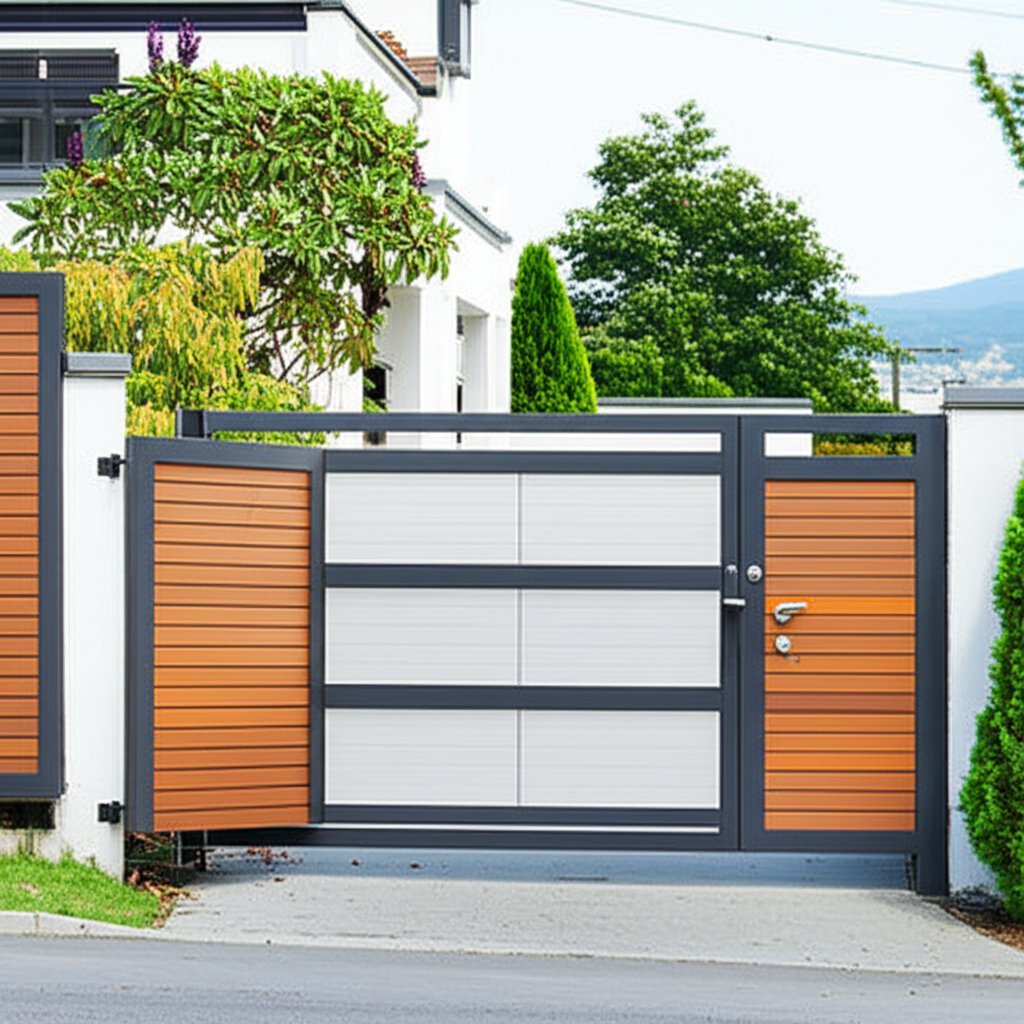
Imagine standing at the entrance of your home, where a thoughtfully designed gate and fence not only mark the boundaries of your property but also enhance its beauty and functionality. The art of gate and fence design is more than just a practical necessity; it is a strategic investment that significantly boosts curb appeal, security, privacy, and overall property value.
When you consider the impact of a well-crafted gate and fence, you'll notice that they serve a dual role. Firstly, they are aesthetic elements that set the tone for the rest of your property. Whether you prefer a charming wooden picket fence or a sleek modern metal gate, these structures can instantly elevate the visual appeal of your home, making it stand out in the neighborhood. According to Elevated Magazines, homes with attractive outdoor features often achieve higher market values.
Secondly, gates and fences are functional components that provide essential security and privacy. They act as deterrents against unauthorized access, giving you peace of mind and control over who enters your property. This is particularly crucial in today's world, where privacy and security are top priorities for homeowners.
Throughout this guide, we'll explore various aspects of gate and fence design to help you make informed decisions for your project. From understanding the fundamental components and exploring popular styles to selecting the right materials and adapting designs to regional preferences, this comprehensive overview will equip you with the knowledge needed to create a stunning and secure outdoor space. Whether you're inspired by fence gate designs photos or looking to enhance your home's market appeal, this guide will be your go-to resource for achieving design success.
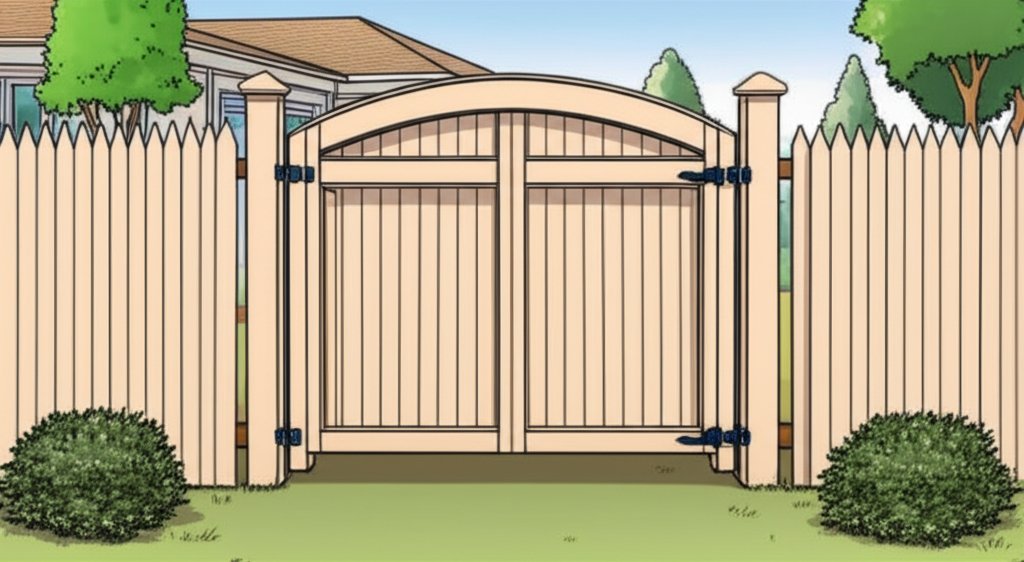
When embarking on a gate and fence design project, understanding the fundamental components is crucial for ensuring both structural integrity and aesthetic appeal. Each element plays a specific role, contributing to the overall durability and visual impact of the structure.
Let's start with the backbone of any fence: the posts. These vertical supports are essential for anchoring the fence securely into the ground, providing stability against weather and time. Proper fence post spacing is vital; typically, posts are spaced 6 to 8 feet apart, but this can vary based on the fence type and materials used. The spacing ensures that the fence remains sturdy and evenly distributed, preventing sagging or leaning over time.
Next, we have panels and pickets, which form the main body of the fence. Panels are often pre-assembled sections that attach to the posts, while pickets are individual slats that can be customized for more detailed designs. Rails run horizontally along the fence, providing additional support to the pickets or panels. According to Ergeon, rails are typically 2x4" thick strips of wood, crucial for maintaining the fence's shape and strength.
Caps are decorative elements placed on top of the posts, serving both aesthetic and protective functions. They prevent water from seeping into the posts, thereby reducing the risk of rot and extending the fence's lifespan.
In addition to fence components, gates require specific elements to function effectively. The gate frame construction is the foundation of any gate, providing the necessary support for its operation. Frames are typically made from robust materials to withstand frequent use and environmental stresses.
Hinges are crucial for the gate's movement, allowing it to swing open or closed smoothly. The choice of hinge depends on the gate's weight and material, ensuring it can handle the load without sagging. For those interested in modern conveniences, gate automation options like ram and linear motors offer a user-friendly solution for automating gate operations, providing both security and ease of access.
By understanding these key elements, you can ensure that your gate and fence design not only meets your aesthetic desires but also stands the test of time, providing a secure and attractive boundary for your property. As we move forward, we'll explore how to draw inspiration from various design styles and incorporate these elements effectively into your project.
When embarking on a gate and fence design project, one of the most crucial steps is gathering visual inspiration. This process not only helps in identifying styles and materials that resonate with your taste but also aids in envisioning how these elements can be integrated into your property. Let's explore how you can effectively source and utilize design inspiration to create a stunning and functional outdoor space.
Online platforms like Pinterest, Houzz, and Instagram are treasure troves of gates and fences designs photos. These platforms allow you to browse through thousands of images, giving you a wide range of styles, from modern minimalist to rustic wooden designs. Magazines dedicated to home and garden design also offer curated collections of the latest trends and timeless classics. By analyzing these images, you can identify preferred styles, material combinations, and color schemes that align with your vision.
Don't overlook the inspiration that can be drawn from your local environment. Walking around your neighborhood or visiting local parks and gardens can provide real-life examples of fence and gate design ideas that work well with similar landscapes and architectural styles. To organize your findings, consider creating a mood board. This tool allows you to compile images, color swatches, and material samples in one place, helping you visualize the overall aesthetic of your project. According to a guide on Milanote, mood boards are essential for communicating design directions and ensuring a cohesive look.
For those interested in modern and elegant designs, exploring options like the Shengxin Aluminum's louvered swing door can provide both aesthetic appeal and durability. This particular design combines sleek lines with robust materials, offering a perfect blend of style and functionality.
Once you've collected your inspirational images, it's time to analyze and apply them to your project. Look for recurring themes or elements that you find appealing. Is it the color palette, the texture of materials, or the overall design style? Understanding what draws you to certain images will help you make informed decisions about your own design. Additionally, consider how these elements can be adapted to fit the unique characteristics of your property, such as its size, location, and existing architectural features.
By leveraging these resources and techniques, you can confidently move forward with your gate and fence design project, ensuring that the final result is both visually striking and perfectly suited to your needs. As we continue, we'll delve into popular styles that can further refine your design choices.
When it comes to gate and fence design, selecting a style that complements your home and personal taste is crucial. Let's delve into some of the most popular styles: modern, elegant, and wooden designs. Each offers unique characteristics and material pairings that can transform any property.
Modern designs are characterized by their sleek lines, minimalistic features, and use of innovative materials like aluminum. These designs often incorporate geometric patterns and neutral colors, creating a contemporary look that enhances any modern home. A standout choice for those seeking both precision and durability is the use of aluminum, such as those offered by Shengxin Aluminum. Their modern aluminum gates provide a seamless blend of style and functionality, offering corrosion resistance and minimal maintenance.
For those who prefer a touch of sophistication, elegant designs offer intricate details and refined aesthetics. These gates and fences often feature ornate patterns and decorative elements that add a luxurious feel to your property. Materials such as wrought iron or customized aluminum can be used to achieve this look. The elegance of these designs is not just about appearance; they also provide robust security and privacy features, making them a practical choice for homeowners who value both beauty and function.
Wooden designs bring a natural warmth and charm that is hard to replicate with other materials. They are versatile, allowing for a range of styles from rustic to contemporary. The choice of wood type—such as cedar, redwood, or pine—affects not only the visual appeal but also the durability and maintenance needs of the fence. Wooden gates and fences can be customized with stains or paints to match your home’s exterior, providing a cohesive look that enhances curb appeal.
As you consider these styles, think about how they align with your property’s architecture and your personal aesthetic preferences. Whether you're drawn to the clean lines of modern designs, the ornate details of elegant styles, or the timeless appeal of wood, each option offers unique benefits that can elevate your home’s exterior. In the next section, we’ll explore how to choose the right materials to complement these styles and meet your specific needs.
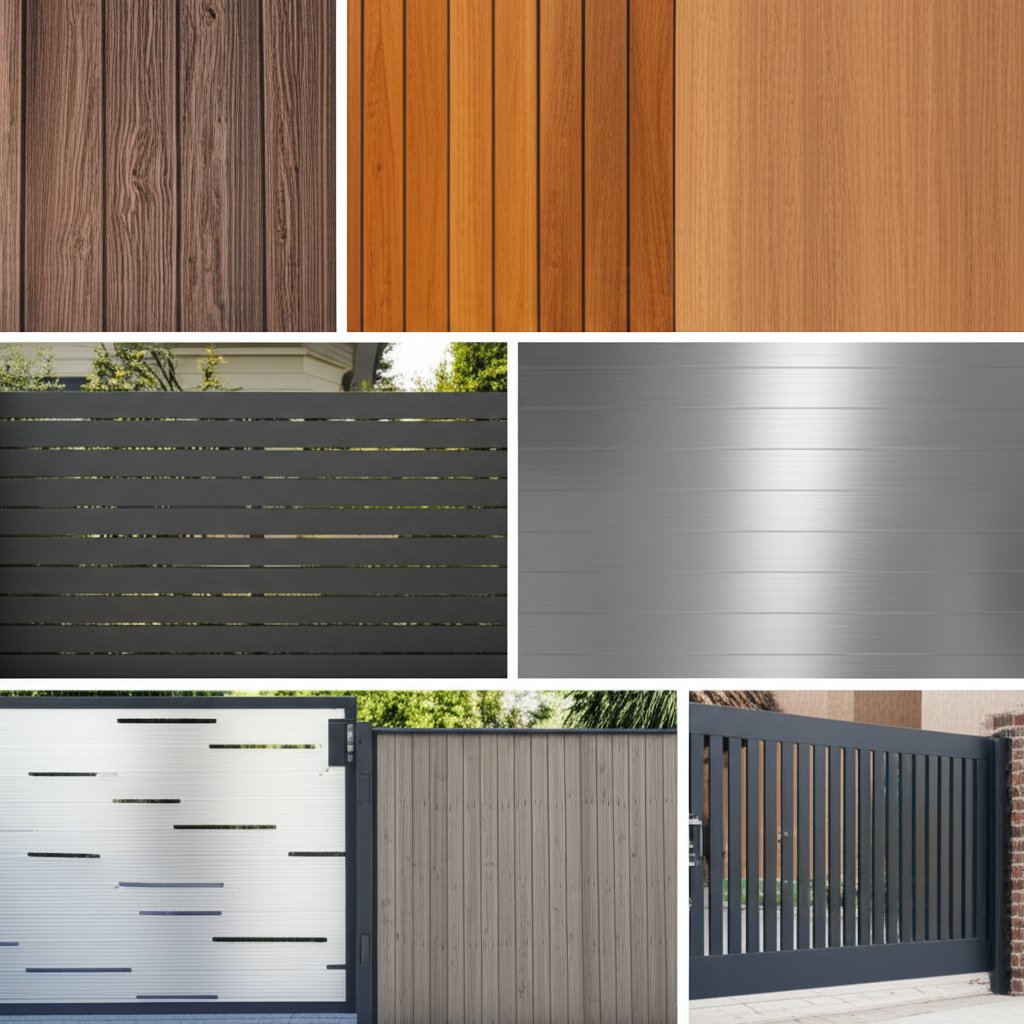
When it comes to gate and fence design, selecting the right materials is paramount to achieving the desired balance of aesthetics, durability, and cost-effectiveness. Each material offers distinct advantages and challenges, making it crucial to understand their properties before making a decision.
Wood remains a popular choice for its natural beauty and versatility in wooden fence and gate designs. It offers a warm, traditional aesthetic that can be tailored to various styles, from rustic to contemporary. Cedar, redwood, and teak are preferred for their durability and resistance to decay. However, wood requires regular maintenance, including staining and sealing, to protect it from weathering and pests. While the initial cost may be lower, the ongoing upkeep can add up over time, making it less cost-effective in the long run.
Concrete is known for its strength and durability, making it an excellent choice for those seeking a low-maintenance option. It provides a solid barrier that enhances security and privacy. Concrete fences can be molded into various designs, offering flexibility in aesthetics. Despite its benefits, concrete can be more expensive to install and may not offer the same visual warmth as natural materials like wood.
Metals such as steel, wrought iron, and aluminum are favored for their durability and modern appeal. Steel and wrought iron provide robust security but can be prone to rust if not properly treated. Aluminum, on the other hand, stands out for its lightweight, rust-resistant properties, making it ideal for various climates. According to Orange Fence, aluminum is not only durable but also eco-friendly, often made from recycled materials and fully recyclable at the end of its life cycle. This makes it a sustainable choice for environmentally conscious homeowners.
| Material | Durability | Maintenance | Cost | Aesthetics |
|---|---|---|---|---|
| Wood | Moderate | High | Varies | Traditional |
| Concrete | High | Low | High | Varies |
| Aluminum | High | Low | Moderate | Modern |
Choosing the right material for your gate and fence design involves considering your specific needs, budget, and the overall look you want to achieve. For those interested in a modern and durable solution, Shengxin Aluminum offers high-quality aluminum profiles that combine aesthetic appeal with long-lasting performance. As we move forward, we'll explore how to design gates and fences that enhance the front of your property, focusing on curb appeal and functionality.
When it comes to front fence and gate designs, the choices you make can significantly impact your property's curb appeal, security, and privacy. A well-designed front yard gate and fence not only enhances the aesthetic appeal of your home but also serves practical purposes, such as defining property boundaries and providing security. Let's explore how to design a front yard gate and fence that meets these needs while integrating seamlessly with your home's architecture.
First impressions matter, and your front yard is the first thing visitors see. A thoughtfully designed gate and fence can set the tone for your entire property. Consider using materials and styles that complement your home's architectural elements. For instance, a modern home might benefit from sleek metal fences, while a traditional house could be enhanced by a classic wooden picket fence. According to Bravo Fence Company, combining style with functionality ensures your front yard not only looks inviting but also serves its practical purposes effectively.
Strategic gate placement is crucial for both aesthetics and functionality. The gate should align with your front door or driveway for a coherent flow. When considering height, balance privacy needs with local regulations. Many areas have restrictions on fence height, typically allowing up to 4 feet for front yard fences. This height provides a sense of openness while maintaining a boundary. If privacy is a concern, consider designs that incorporate taller elements or additional landscaping for screening.
Security is a primary function of any gate and fence. For enhanced security, consider incorporating features like automated gates, which offer convenience and control over access. Automated gates can be operated via remote control or smartphone apps, adding a layer of security and ease of use. Additionally, integrating lighting along the fence line can deter intruders and enhance visibility at night, creating a welcoming ambiance.
Before installing your front yard gate and fence, it's essential to check local building codes and regulations. These rules can dictate everything from the materials you can use to the maximum allowable height. Compliance not only ensures your project is legal but also prevents costly modifications later. Consulting with a professional or your local municipality can provide clarity on these requirements.
Designing a front gate and fence involves careful consideration of aesthetics, security, and regulatory compliance. By balancing these elements, you can create a front yard that not only enhances your property's curb appeal but also meets your functional needs. As we continue, we'll explore clever solutions for designing gates and fences for small properties, ensuring every space is used effectively.
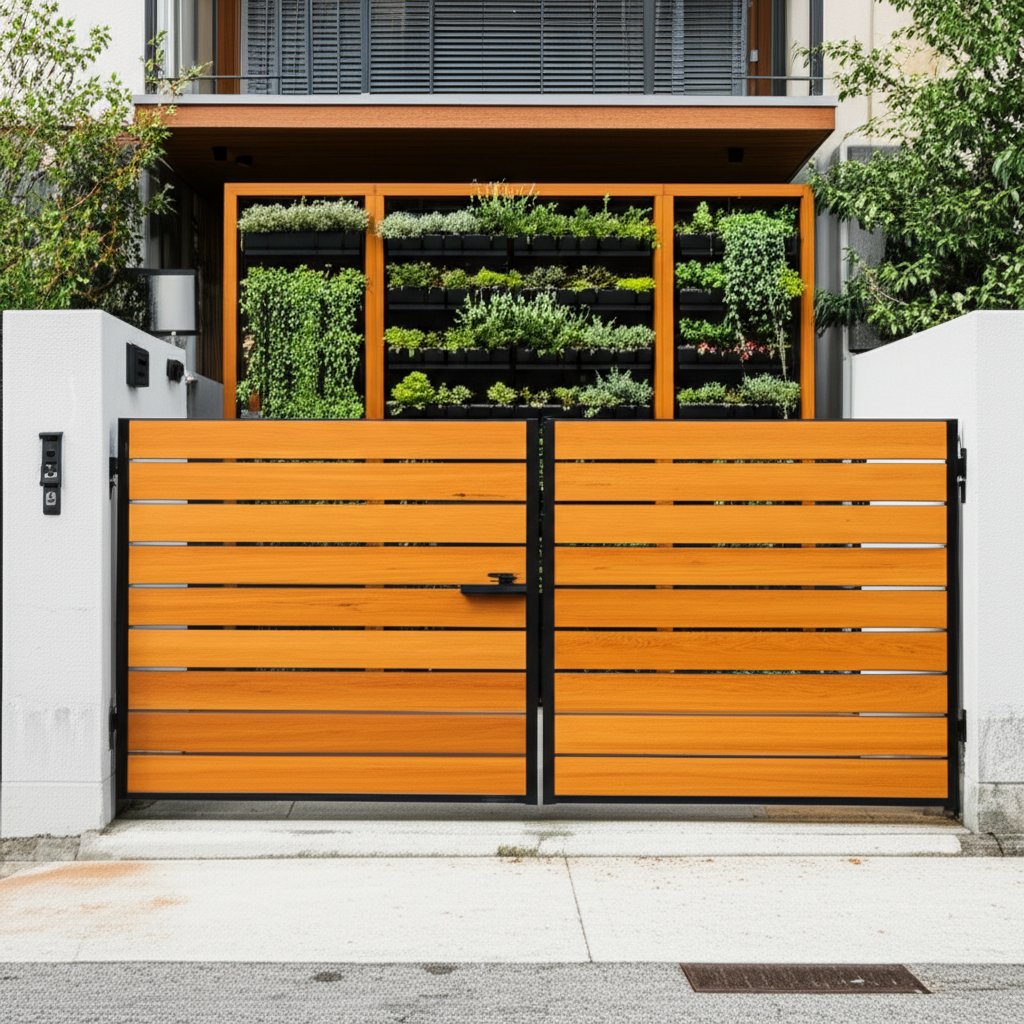
When dealing with limited outdoor space, designing effective fence and gate design for small house environments requires creativity and strategic planning. The challenge lies in maximizing functionality and aesthetics without overwhelming the space. Fortunately, several innovative solutions can help you achieve a harmonious balance.
One of the most effective ways to make a small yard feel more expansive is by creating the illusion of space. Transparent or semi-transparent fencing materials, such as glass panels or acrylic sheets, can open up the area and allow more light to filter through, creating a sense of openness. This approach is particularly beneficial for urban homes where space is at a premium. Additionally, incorporating vertical elements like trellises or vertical gardens can draw the eye upward, adding dimension and greenery without taking up valuable ground space, as suggested by Bryant Fence.
Traditional swing gates often require significant clearance, which can be impractical in small settings. Instead, consider space-saving alternatives like sliding or folding gates. Sliding gates move horizontally along a track, eliminating the need for swing space, making them ideal for narrow driveways or side yards. Folding gates, on the other hand, collapse in sections, offering flexible positioning and compact storage. These designs not only save space but also enhance the property's functionality and security. According to Perimtec, sliding gates can save up to 50-70% of the space required by traditional swing gates, making them a practical choice for small properties.
Selecting the right materials is crucial for ensuring that your small gate and fence design complements the limited space. Lightweight materials like aluminum are ideal due to their durability and minimal maintenance requirements. Aluminum's rust-resistant properties make it suitable for various climates, and its sleek appearance aligns well with modern design aesthetics. Additionally, using multi-functional fences with integrated storage or seating can maximize utility without sacrificing style. These features can transform a small yard into a cozy retreat, providing both functionality and visual appeal.
Designing gates and fences for small houses involves strategic choices that enhance both the usability and aesthetics of the space. By employing transparent materials, opting for space-saving gate designs, and choosing appropriate materials, you can create a charming and efficient outdoor area that feels larger than it is. As we proceed, we'll explore how regional preferences can influence gate and fence designs, using the Philippines as a case study to highlight cultural and environmental considerations.
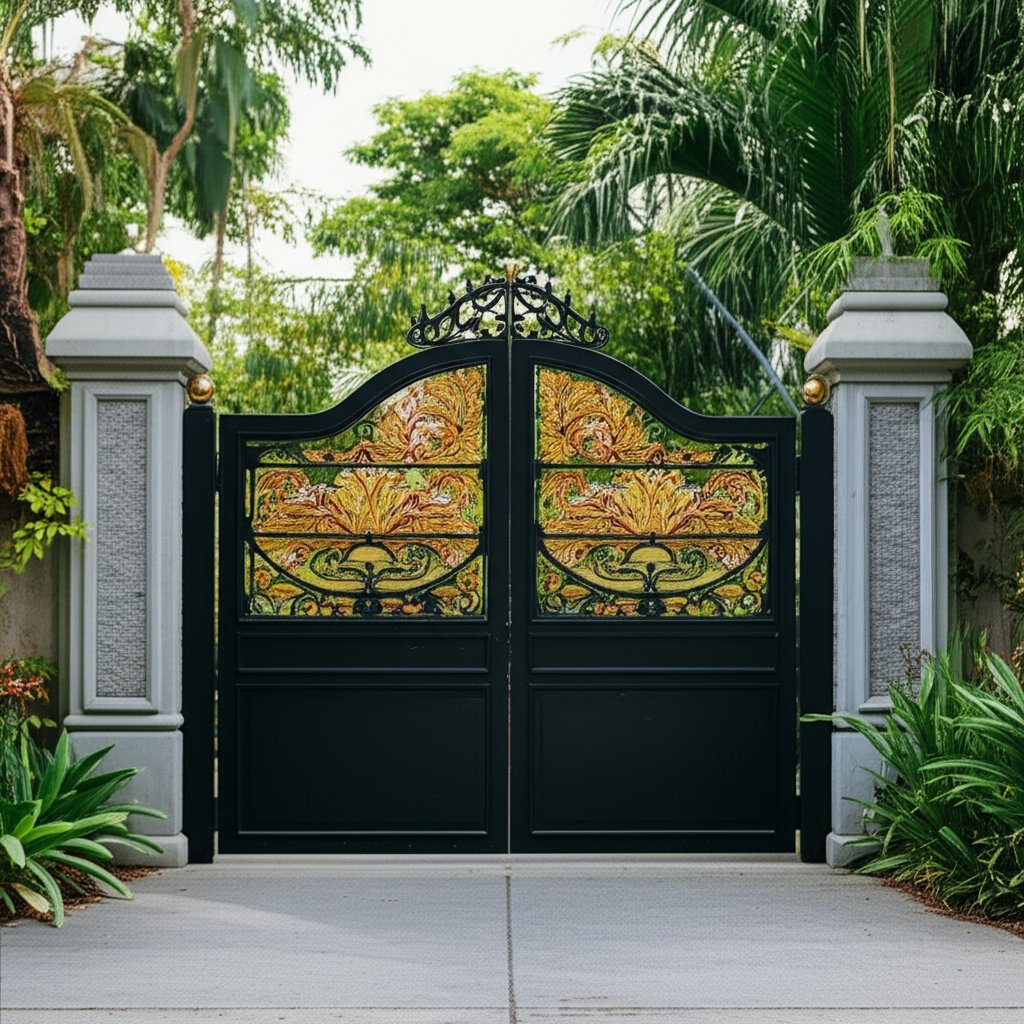
Designing gates and fences is not just about selecting materials and styles; it's also about adapting to the unique regional characteristics that influence these choices. In the Philippines, factors such as climate, cultural aesthetics, and local material availability play significant roles in shaping modern gate and fence design philippines.
The Philippines is known for its tropical climate, characterized by high humidity, frequent rainfall, and typhoons. These conditions necessitate the use of materials that can withstand harsh weather. For instance, aluminum and galvanized steel are popular choices due to their corrosion resistance and durability. These materials help ensure that fences and gates remain intact and visually appealing despite the challenging climate.
Additionally, designs often incorporate features that allow for airflow and water drainage, such as louvered panels or perforated metal. These features not only improve the longevity of the structures but also enhance comfort by allowing breezes to pass through, which is crucial in a humid environment.
The aesthetic preferences in the Philippines are deeply rooted in its rich cultural heritage. Traditional designs often feature intricate patterns and motifs that reflect local artistry. However, there is also a growing trend towards modern gate and fence design philippines, which blends contemporary styles with traditional elements. This fusion creates unique and visually striking designs that resonate with both historical and modern sensibilities.
For example, a modern gate might incorporate minimalist lines and neutral colors while including decorative elements inspired by indigenous patterns. This approach not only respects cultural traditions but also meets the evolving tastes of homeowners seeking modern aesthetics.
Material availability significantly influences design choices in the Philippines. Locally sourced materials like bamboo and hardwoods are commonly used due to their abundance and sustainability. Bamboo, in particular, is favored for its eco-friendliness and versatility, allowing for creative and cost-effective designs.
However, as global influences grow, there is an increasing interest in materials like aluminum and composite panels, which offer modern aesthetics and low maintenance. These materials are often imported, reflecting the Philippines' openness to integrating international trends with local practices.
In conclusion, understanding the interplay of climate, culture, and material availability is essential for creating effective fence and gate design philippines. By considering these factors, designers can craft solutions that not only enhance the visual appeal of properties but also withstand the environmental challenges unique to the region. As we look ahead, we'll explore how to craft durable and appealing wooden fences and gates, focusing on materials and techniques that ensure longevity and beauty.
When it comes to wooden fence and gate designs, the timeless appeal and natural beauty of wood make it a favored choice for many homeowners. However, creating a wooden structure that is both aesthetically pleasing and long-lasting requires careful consideration of various factors, from the type of wood used to the construction techniques and maintenance practices employed.
The type of wood you select is crucial for both the durability and appearance of your fence and gate. Western Red Cedar is a popular choice due to its natural resistance to decay and insects, offering a beautiful reddish-brown hue that weathers gracefully over time. For those on a budget, pressure-treated Pine provides a cost-effective alternative with enhanced resistance to rot and insects. However, it may require more frequent maintenance compared to cedar. Each wood type brings its own set of benefits and considerations, so it's essential to weigh these factors based on your specific needs and local climate conditions.
Proper construction techniques are vital to ensure the longevity of your wooden structures. When building a fence, ensure that the posts are deeply set into the ground, ideally using concrete for added stability. This prevents the fence from sagging or leaning over time. For gates, a robust frame is essential to support the weight and movement, with hinges and latches that are resistant to rust and wear. Using galvanized or stainless steel hardware can enhance the durability of your gate, reducing the need for frequent replacements.
Regular maintenance is key to preserving the beauty and functionality of your wooden fences and gates. Cleaning the wood periodically to remove dirt and debris is a simple yet effective way to maintain its appearance. Applying a protective finish or stain can shield the wood from UV rays and moisture, preventing it from drying out or becoming discolored. According to Wooden Gate Makers, using a high-quality sealant or wood preservative can extend the lifespan of your gate significantly.
Inspect your structures regularly for signs of damage, such as cracks or rot, and address these issues promptly to prevent further deterioration. In areas prone to harsh weather, additional treatments may be necessary to protect the wood from environmental stressors.
The design style of your wooden fence or gate should complement the overall architecture of your property. From classic picket fences that evoke a sense of Americana charm to board-on-board styles that offer enhanced privacy, the options are plentiful. Consider the visual impact of your design choices, such as the height and spacing of pickets, and how they align with your aesthetic preferences and functional needs.
By carefully selecting the right wood type, employing sound construction techniques, and committing to regular maintenance, you can create wood fence and gate designs that not only enhance your property's curb appeal but also stand the test of time. As we conclude our exploration of wooden designs, let's look forward to summarizing the key considerations for achieving overall design success in the final chapter.
As we wrap up this guide on gate and fence design success, it's essential to revisit the core principles that ensure a balance of aesthetics, functionality, material choice, and budget. Each element plays a pivotal role in creating a boundary that not only enhances your property's curb appeal but also meets your security and privacy needs.
Successful designs integrate visual appeal with practical functionality. Whether you opt for modern, elegant, or wooden styles, the key is to select designs that complement your property's architecture while serving their intended purpose. Consider how each design choice impacts both the look and usability of your space.
Choosing the right materials is crucial for durability and cost-effectiveness. Wood offers timeless charm but requires regular maintenance, while metals like aluminum provide long-lasting and low-maintenance durable gate and fence solutions. Shengxin Aluminum stands out as a provider of high-quality aluminum profiles, offering customizable options that blend style with resilience, making them an ideal choice for those seeking both aesthetics and durability.
When planning your project, start by assessing your specific needs and constraints, such as local climate, regulatory requirements, and budget. Use this guide as a roadmap to navigate the various options available, ensuring that each decision aligns with your long-term goals. Remember, investing in quality materials and thoughtful design today can save you time and money on maintenance and repairs in the future.
In conclusion, achieving gate and fence design success requires a holistic approach that considers all aspects of the project. By applying the principles discussed in this guide and exploring the offerings of industry leaders like Shengxin Aluminum, you can create a beautiful, functional, and durable boundary that enhances your property for years to come.
Yes, installing a gate or fence often requires planning permission to ensure compliance with local regulations. It's crucial to check with your local planning committee to understand the specific guidelines and requirements in your area.
The cost of installing a gate varies widely based on materials and design. DIY kits can range from $200 to $2,500, while custom gates may cost between $700 and $12,000. Consider your budget and desired features when planning your project.
Fence posts for gates typically require specific spacing to accommodate hinges and latches. For single walk gates, posts should be spaced to allow for a 3¾" gap, while double drive gates need a 5½" gap. This ensures proper gate function and stability.
Aluminum is highly recommended for its durability and low maintenance. It's rust-resistant and eco-friendly, making it an ideal choice for modern designs. Wood offers a classic look but requires more upkeep, while concrete provides robust security.
For small spaces, consider sliding or folding gates, which save space by eliminating swing clearance. Transparent materials like glass can also create a sense of openness, enhancing the perceived space in compact areas.
 online service
online service 0086 136 3563 2360
0086 136 3563 2360 sales@sxalu.com
sales@sxalu.com +86 136 3563 2360
+86 136 3563 2360